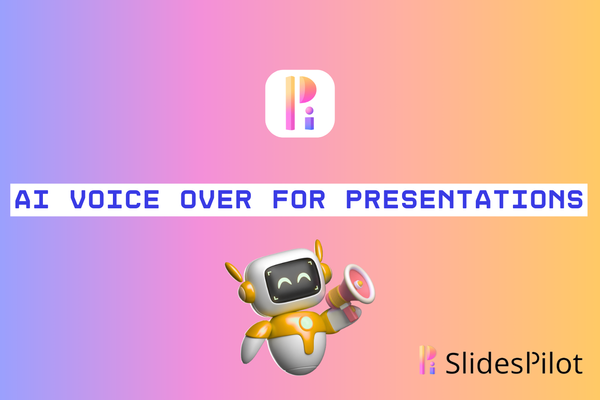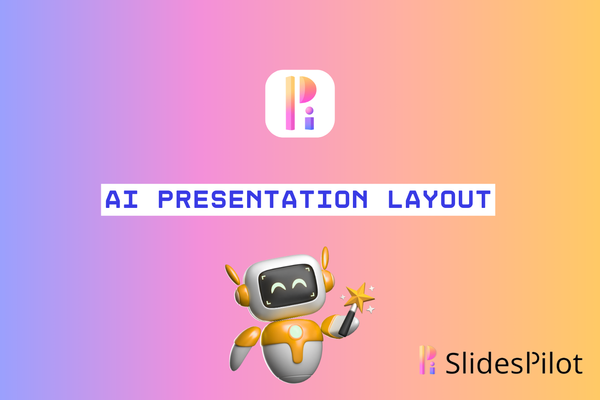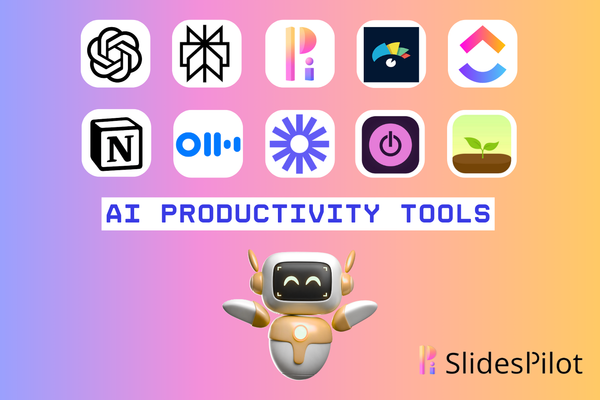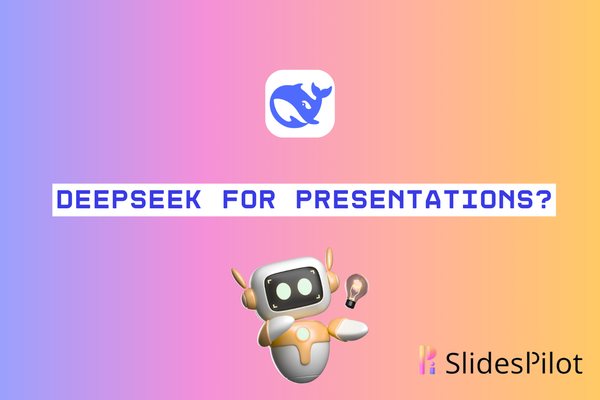Mastering Storytelling in Presentations: McKinsey's 3-Step SCR Framework
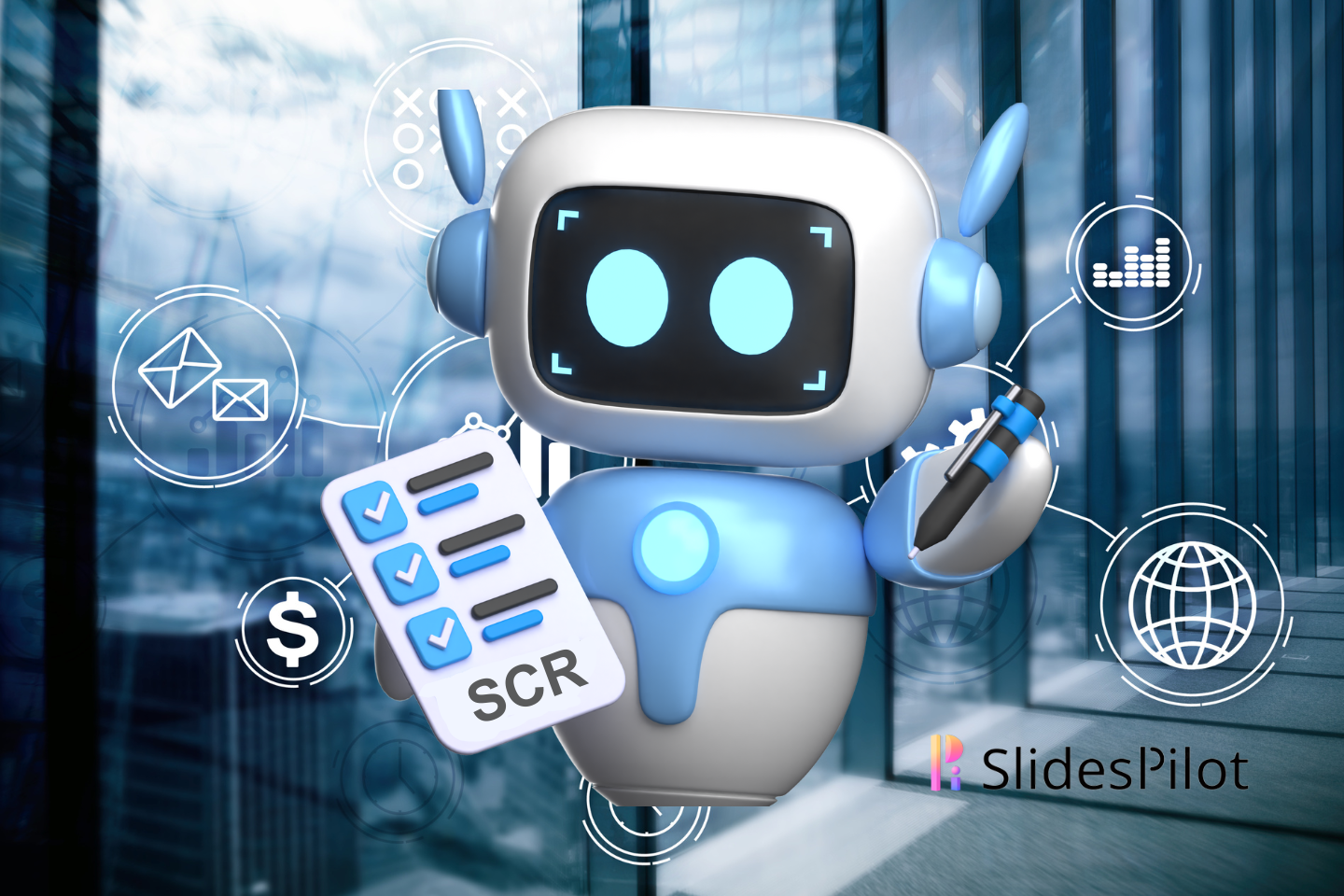
Powerful presentations go beyond delivering information - they tell compelling stories that inspire action. In the corporate world, McKinsey stands out as a master of presentation storytelling. Their consultants excel at transforming complex data and recommendations into clear, persuasive narratives that drive decision-making at the highest levels of business.
This article explores McKinsey's renowned three-step framework for storytelling in presentations, providing practical guidance for professionals seeking to enhance their presentation skills.
The Power of Storytelling in Presentations
What is Storytelling in Presentations
Storytelling in presentations transforms raw data and facts into engaging narratives that connect with your audience - creating a compelling journey that resonates both emotionally and intellectually. While traditional presentations rely on linear information delivery and organize content by topic, storytelling builds emotional connections through narrative arcs. It engages audiences by developing characters and building conflict, making content significantly more memorable and driving action rather than simply presenting information.
Comparing Storytelling and Presenting
| Storytelling | Presenting | |
|---|---|---|
| Engagement with audience | Creates emotional connection | Maintains professional distance |
| Flow | Natural narrative progression | Linear information delivery |
| Retention | Memorable through context | Relies on repetition |
| Impact | Persuades through experience | Convinces through facts |
| Format | Narrative-driven structure | Information-focused layout |
Why Storytelling Matters in Presentations
Research shows that stories are 22 times more memorable than facts alone. Through storytelling, we can transform complex data and recommendations into clear, memorable concepts. Here's how:
- Enhanced Engagement: Stories capture and maintain audience attention by making complex information easier to understand.
- Better Information Retention: Narrative structures make key messages more memorable.
- Emotional Connection: Stories create personal resonance, leading to greater audience buy-in.
- Simplified Complexity: Stories transform complex ideas into understandable narratives.
How McKinsey Uses Storytelling to Achieve Business Objectives
McKinsey consultants use the SCR Framework to transform complex data into clear business stories. Through Situation (establishing context), Complication (building urgency), and Resolution (providing solutions), they guide clients from understanding to action. This framework turns analysis into executive-level recommendations that build confidence and drive change. By combining data with storytelling, they help clients implement strategic transformations effectively.
McKinsey's 3-Step SCR Framework
McKinsey's approach to presentation storytelling breaks down into three essential steps: Situation - Complication - Resolution (SCR).
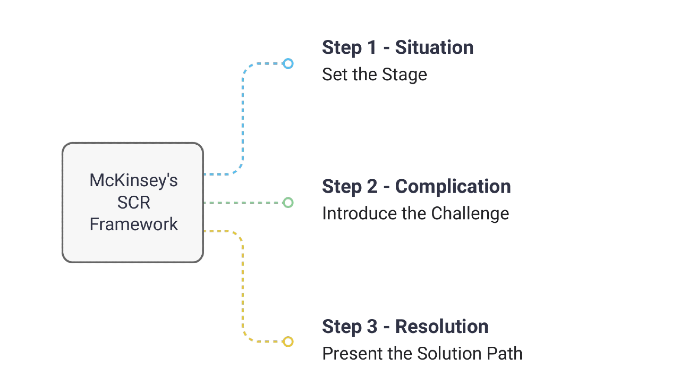
(You can generate the above infographic in SlidesPilot)
Step 1: Situation - Set the Stage
The first step establishes context and common ground with the audience. This section should:
- Define the current state clearly and objectively
- Present established facts that all stakeholders agree on
- Include essential background context
- Frame the scope of discussion
Example Application: "Our company holds 15% market share in the enterprise software segment, showing steady growth over the past five years. Our primary product line drives 80% of revenue, and customer satisfaction scores exceed industry average."
This situation statement builds a foundation of shared understanding before introducing any complications or recommendations.
Pro Tip: Keep the situation section concise and factual. Focus solely on establishing the current reality - avoid introducing problems or solutions at this stage.
Step 2: Complication - Introduce the Challenge
The complication section builds tension and demonstrates why action is necessary. This crucial part:
- Identifies the key problem, challenge, or opportunity
- Builds urgency using data and implications
- Shows what's at stake without intervention
- Links the situation to the upcoming resolution
Example Application: "However, market analysis reveals three emerging competitors gaining ground with next-generation technology. Their combined market share has surged from 5% to 18% in just 18 months. Customer surveys show their platforms deliver 30% faster implementation times and 25% lower total cost of ownership. Without addressing these competitive threats, our market share is projected to fall below 10% within two years."
The complication compels the audience to lean in, understand the challenge, and become open to solutions.
Pro Tip: Use visuals that emphasize contrast—before/after charts, trend lines showing divergence, or competitive comparisons are particularly effective here.
Step 3: Resolution - Present the Solution Path
The final step delivers the payoff—a clear path forward that addresses the complication. This section should:
- Present a logical, evidence-based solution
- Show how the solution directly resolves the complication
- Specify clear actions, timelines, and responsibilities
- Address potential concerns and alternatives
Example Application: "Our recommended three-part strategy addresses these competitive threats while building on our existing strengths. First, we'll accelerate our product roadmap to deliver cloud-native features by Q3. Second, we'll implement a new pricing structure that reduces TCO by 20%. Third, we'll launch an expedited implementation program with guaranteed 45-day deployments. Financial modeling shows this approach will not only defend our current market position but grow our share to 22% within 18 months."
The resolution transforms tension into opportunity, giving the audience both clarity and confidence.
Pro Tip: Present recommendations in a clear, numbered sequence with supporting visuals for each element. This makes complex solutions easier to understand and act upon.
Applying The SCR Framework Effectively
While McKinsey's SCR framework is powerful, many professionals find it challenging to implement. Even those who understand the core concepts often struggle to organize content and build a compelling narrative flow. SlidesPilot addresses this challenge by incorporating SCR principles into its AI-powered templates. The platform automates structural organization, allowing users to create clear, consulting-style presentations without extensive training.
Here's a step-by-step guide for creating an SCR-based presentation:
Step 1: Access the AI Presentation Generator.
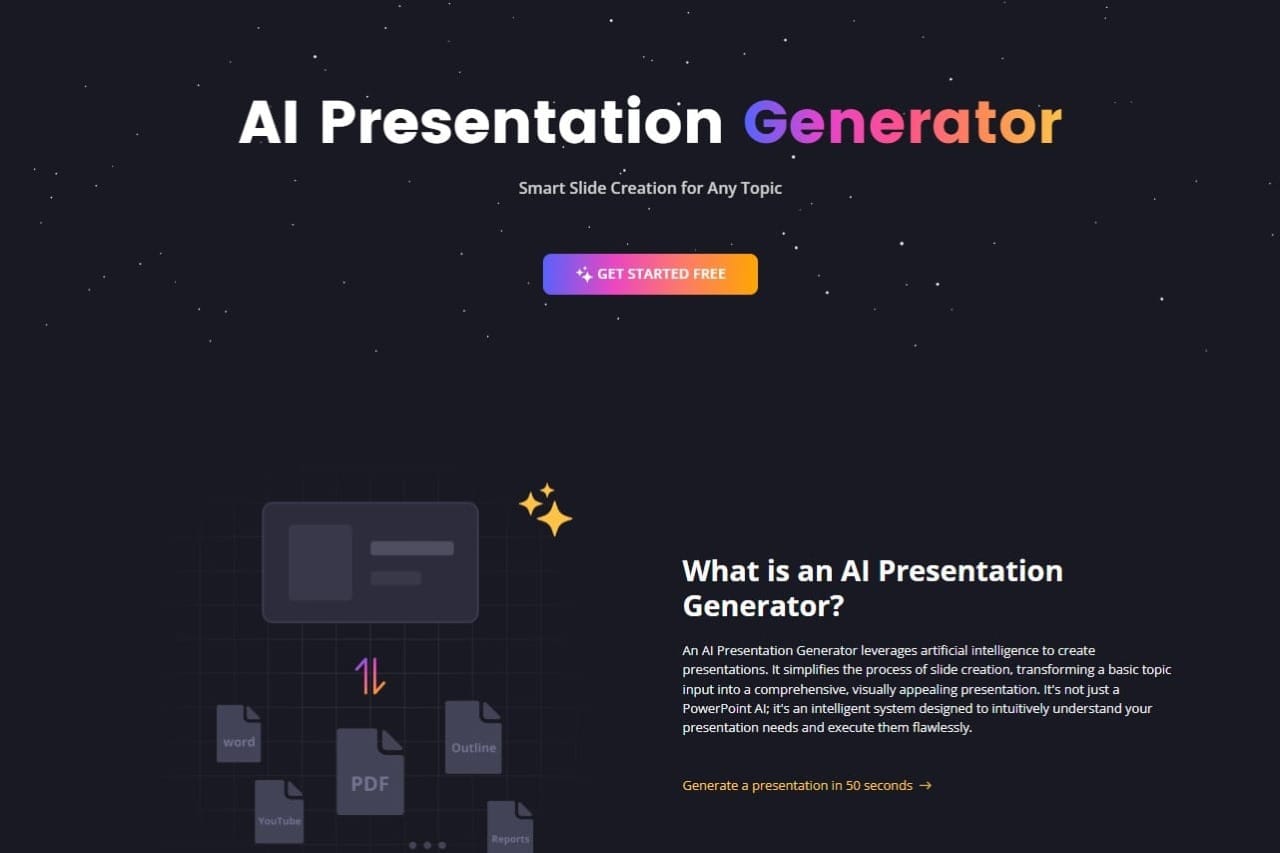
Step 2: Type your topic or any text relating to the topic or idea.
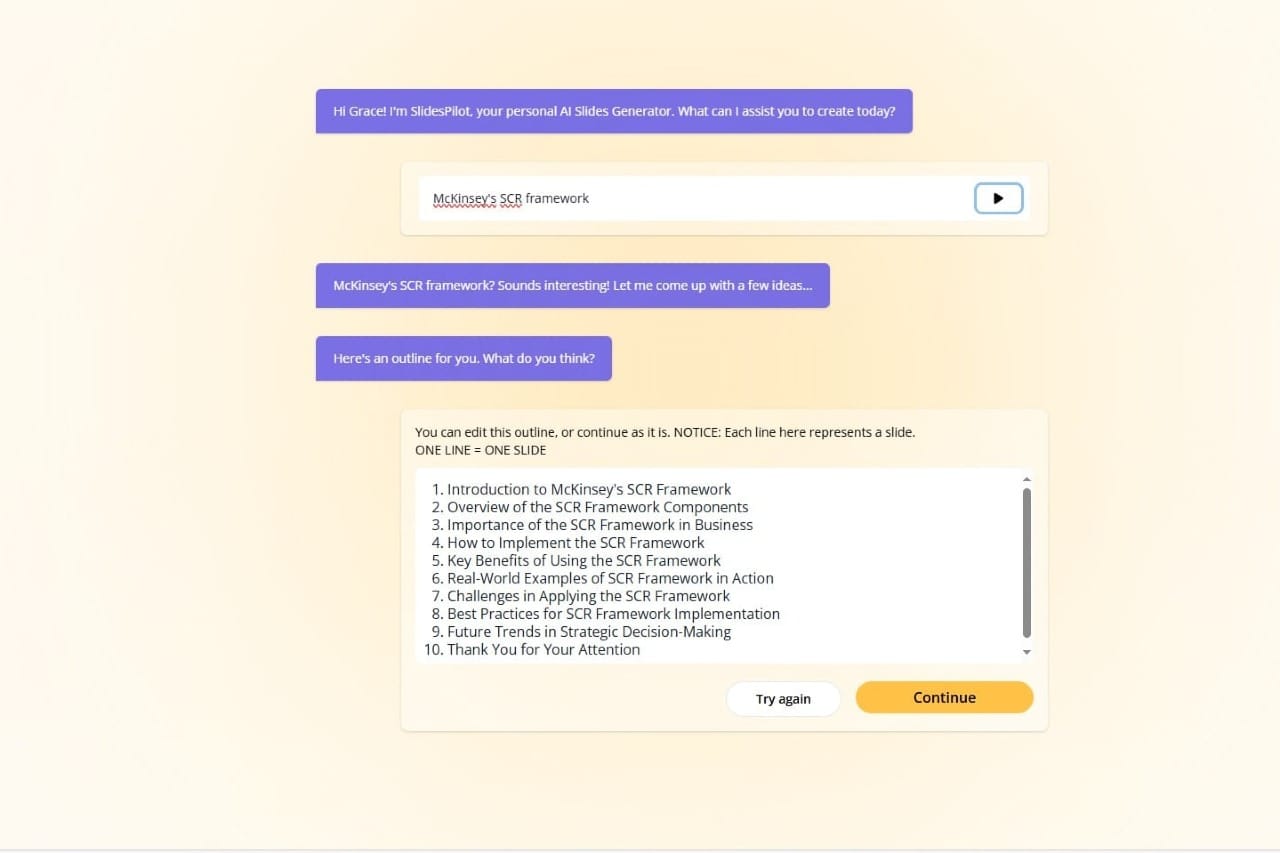
Step 3: Your presentation is ready! You can download it as PPT, Google Slides, PDF, or PNG.
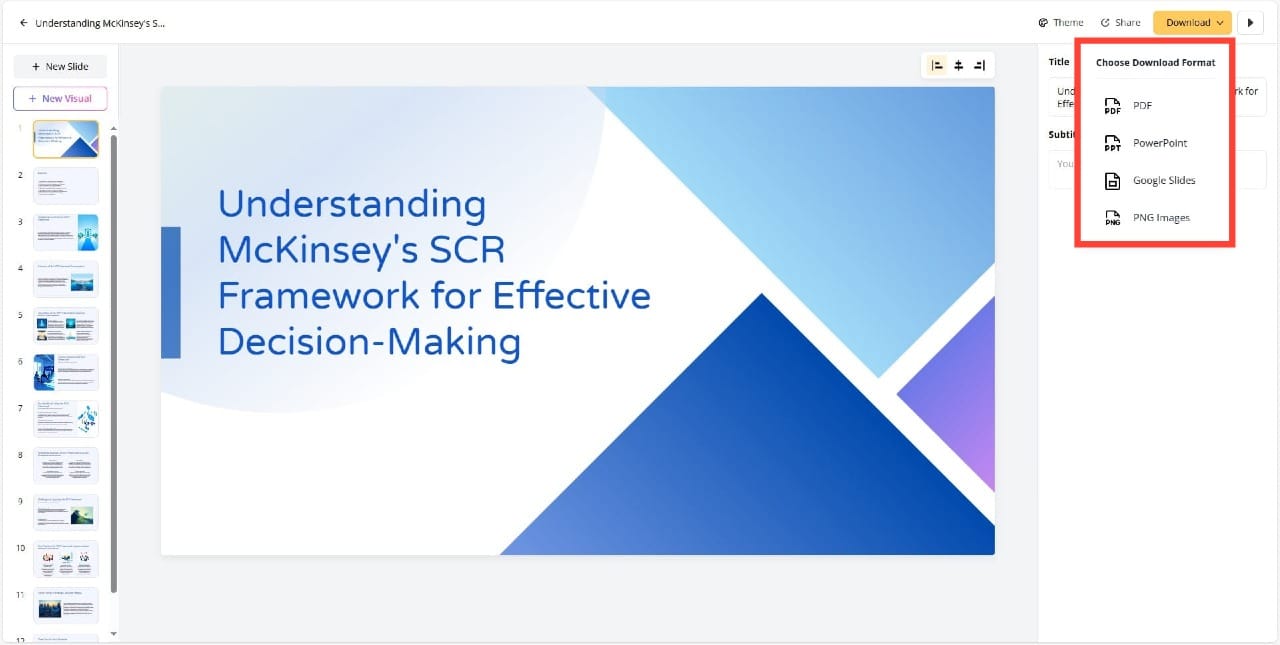
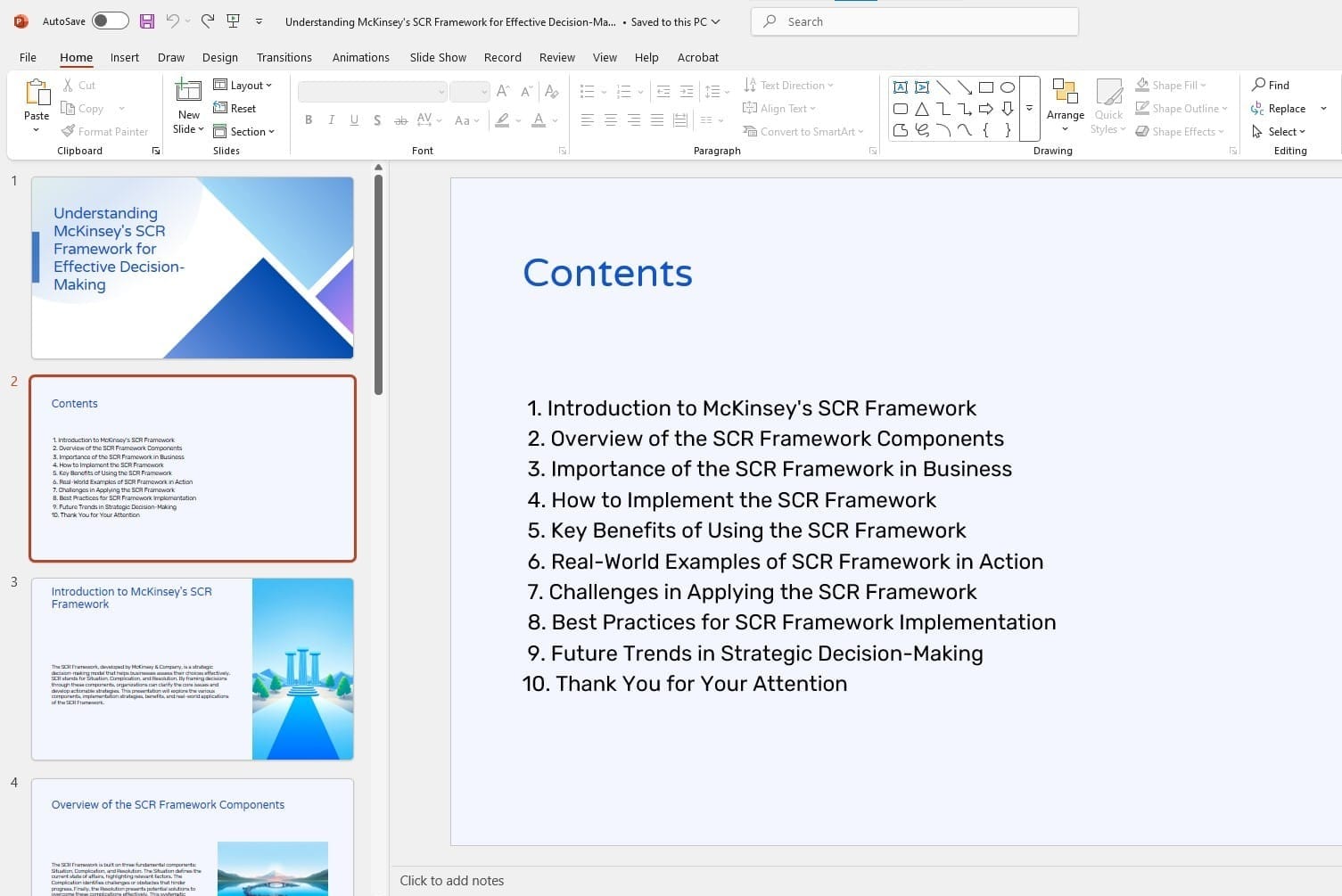
The Takeaway: Common Pitfalls to Avoid
Even with a solid framework, certain mistakes can undermine presentation effectiveness:
- Data overload: Presenting too many statistics without clear narrative context
- Weak transitions: Failing to create smooth connections between slides that maintain the story's flow
- Rushed resolutions: Not allocating sufficient time and detail to the solution
- Ignoring audience perspective: Failing to adapt the story to the specific concerns and priorities of decision-makers
Superfast presentation creation
Join 1 million professionals, students, and educators
Sign up for FREE →

